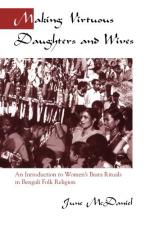|
This section contains 7,858 words (approx. 27 pages at 300 words per page) |

|
BENGALI RELIGIONS. This entry treats Bengal—which corresponds to the Indian state of West Bengal and the country of Bangladesh—as a region in which different religious traditions, from approximately the eighth century to the present, have coexisted, intertwined, and sometimes battled, creating a distinctive context for the study of religion in South Asia. While historically the two "great traditions" have been and continue to be Brahmanical Hindu and Islamic, Bengal has also been highly pluralistic, home to Buddhists, Jains, Parsis, Jews, Christians, Sikhs, and lightly Hinduized tribal peoples, as well as, more recently, Hindus and Muslims who identify as Marxists or secular humanists. This entry proceeds synthetically by proposing thirteen perspectives on Bengal's uniqueness, on what sets "Bengali religions" off from religious traditions elsewhere in the subcontinent.
Bengal as the Last Indian Stronghold of Buddhism
The first regional state in Bengal was established by the...
|
This section contains 7,858 words (approx. 27 pages at 300 words per page) |

|


